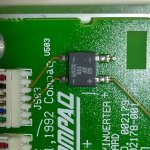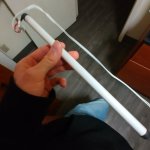CompaqSniffer
Experienced Member
Here we go: power consumption for the Amazon bulbs is purely 6W, and it lists the incandescent equivalent as 25W. Hopefully the circuit powering the light isn't too high so I don't fry my multimeter, and so it also is compatible. How does power flow through these things? Would I be correct to assume it just flows from one end to the other? Also does anyone know if the bulbs in the 486c are DC or AC powered? I don't know if they can behave like incandescents or LEDs and take either.




